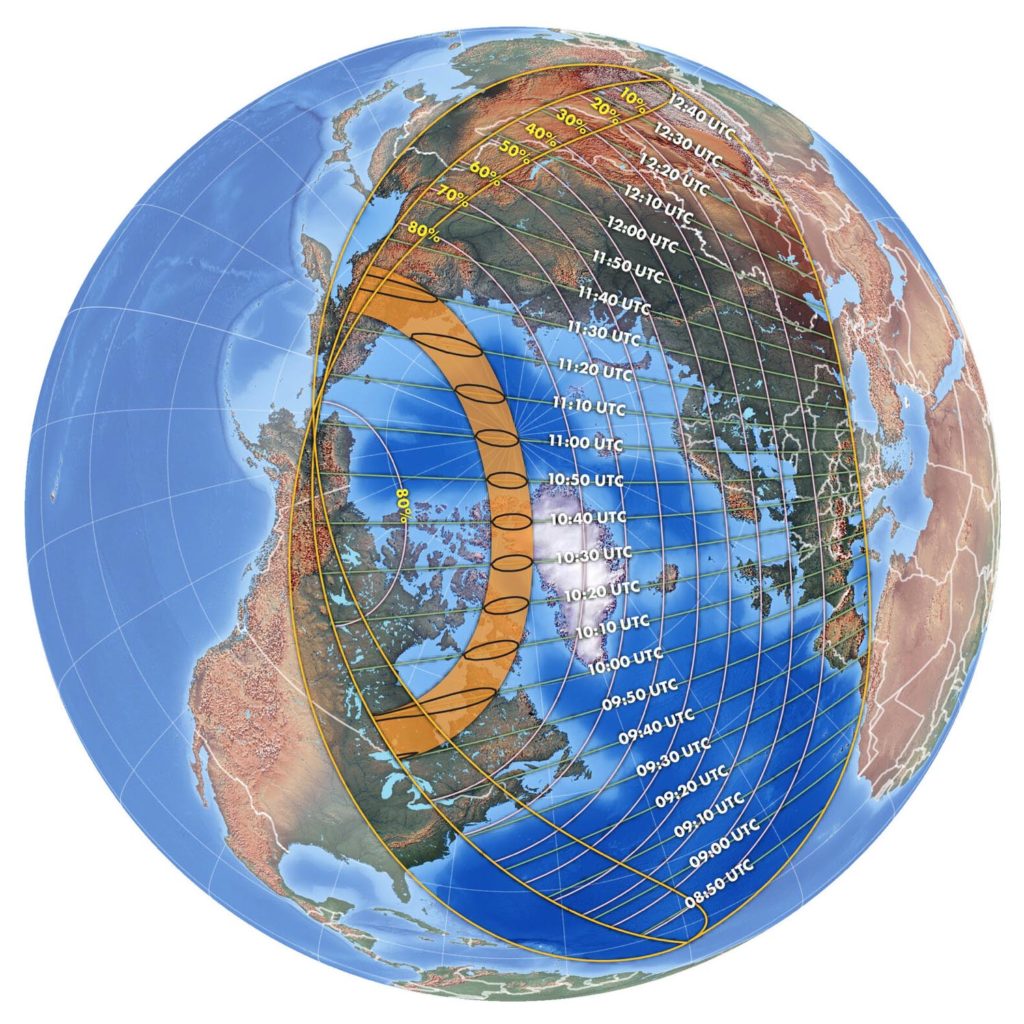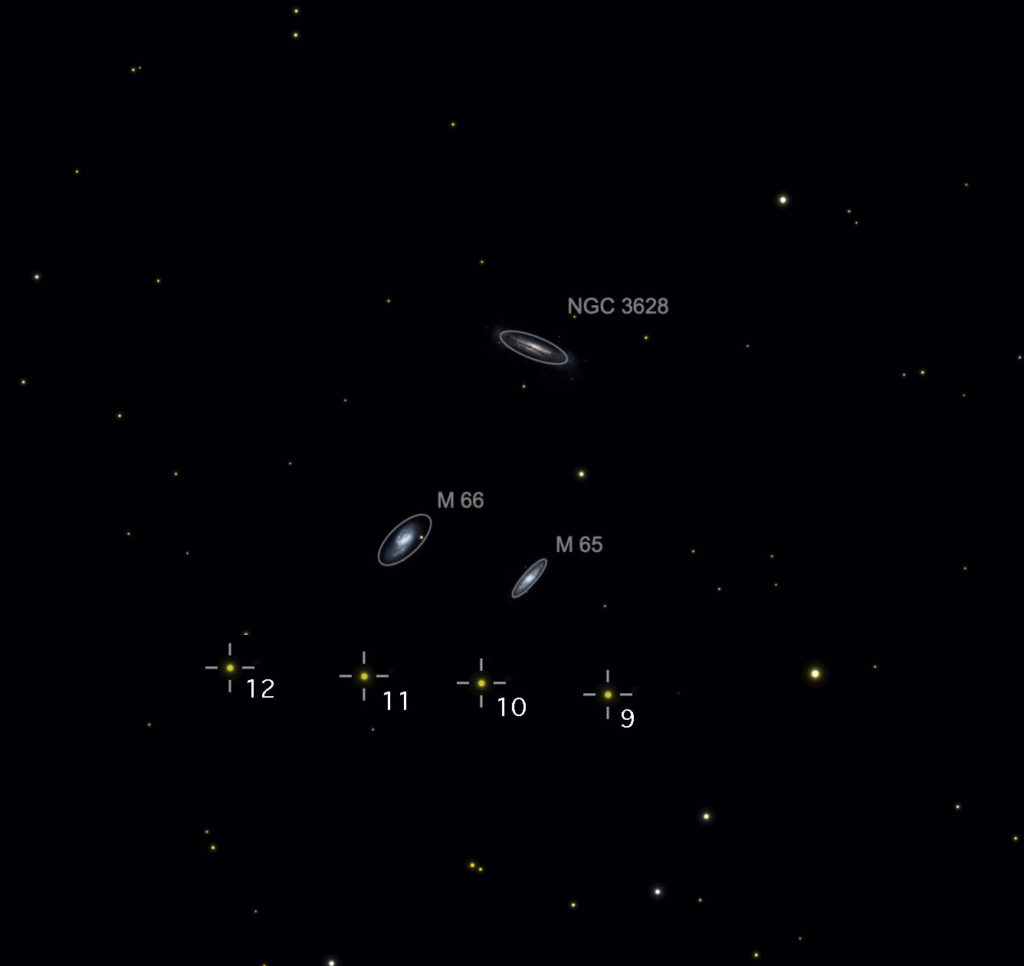Sky Report: June 7 – June 13

The solar eclipse of June 10. The eclipse is annular within the orange band and partial within the darker area. Credit: Michael Zeiler, GreatAmericanEclipse.com at
https://www.greatamericaneclipse.com/2021-june-10

Vesta and three galaxies in Leo on June 9, 10, 11, and 12. Graphic created with SkySafariAstronomy.com.
The good news is that there is a rare “annular” or ring eclipse of the sun on June 10 — but the bad news is that you won’t see it unless you’re in a small part of Russia, Greenland, or northernmost Canada. It will be a nice partial eclipse for some eastern states and much of Canada and Europe, but there’s nothing to see from the rest of North America. If you have friends in states above a line running roughly from Minneapolis to Charleston alert them to this. For details including maps Google “2021 June 10 eclipse”.
Regarding planets, look for Venus low in the southwest during evening twilight. Venus outshines everything in the sky except the moon, which is just below Venus on the 11th. Venus is especially pretty when shining through or between colorful clouds at sunset – a good photo opp.
Mars is 20° to the upper left of Venus, in line with and to the left of Castor and Pollux, the heads of Gemini the Twins. Mars is less than 4° straight below the moon on the 13th and you can see both together in binoculars.
Jupiter and Saturn rise at about midnight and 1 am, respectively, and are almost half-way up the southern sky at dawn. Jupiter is brilliant while Saturn is as bright as the brightest stars.
Here’s a treat for people with a small telescope: the asteroid Vesta moves past several bright galaxies in Leo on the nights of June 9-12, and with even a small telescope (and a dark sky!) you can watch Vesta pass them. Vesta is a “minor planet” 330 miles across that orbits in the asteroid belt between Mars and Jupiter, so it slowly moves against the starry sky like the planets do. It’s bright enough to see in binoculars but the galaxies that lie far beyond it are not, so use a telescope under low power and enjoy the novelty. The background galaxies are collections of hundreds of billions of stars just like our Milky Way and they’re 40 million light years distant. Use a star atlas or one of the many astronomy apps detailed enough to show the galaxies, and then Vesta nearby. Google “galaxy M65” etc. for details on these background objects. Vesta remains in Leo until the end of June and you can see it any night, but not until July 26 does it pass so near a bright galaxy.
The Sky Report is presented as a public service by the Stellar Vista Observatory, a nonprofit organization based in Kanab, Utah, which provides opportunities for people to observe, appreciate, and comprehend our starry night sky. Additional information is at www.stellarvistaobservatory.org. Send questions and comments to
John@StargazingAdventures.org






Comments are closed.